Pilot shortage is good news for Tri-Cities. Here’s why the Pasco airport is thriving
A pilot shortage is slashing air service to smaller regional airports, but it’s having the opposite effect on the Tri-Cities.
This week, American Airlines announced it would become the sixth airline to serve the commercial airport in Pasco beginning in February, when it starts offering daily service to Phoenix Sky Harbor International.
American will fly an Embraer 175 regional jet. The 76-seat airplane is indicative of the new, larger planes visiting the Tri-Cities. And it’s not the only one.
Seattle-based Alaska Airlines regularly flies Boeing 737s between the Tri-Cities and Seattle-Tacoma International. Typically, the planes are configured with nearly 180 seats — triple the capacity of the older regional jets that used to make up the local fleet.
American and Alaska are no aberration, said Jack Penning, managing partner of Volaire Aviation Consulting. Volaire advises the Port of Pasco, which operates the Tri-Cities Airport, on industry issues.
Penning provided his annual state-of-the-industry report to the port this month. And it was rosy in the extreme.
The Tri-Cities Airport is one of just 10 to 15 regional airports nationwide poised to add air service in coming years, Penning said. That’s because it has a growing population and leads the Northwest in filling seats with fare-paying passengers.
Penning explained that a pilot shortage is compelling airlines to fly larger planes with more seats. Simply put, pilots cost more and airlines earn more revenue when they fly more seats.
The Tri-Cities, he said, has the best record of selling seats in Washington, Idaho or Oregon.
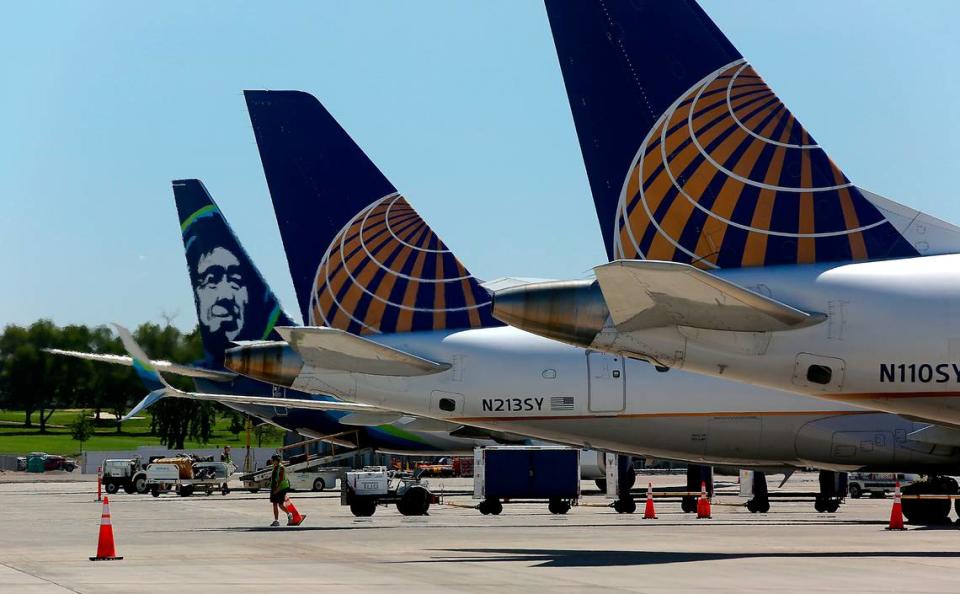
In 2022, the five current airlines serving the Tri-Cities with direct service to nine markets were 91% full on average.
“We’re kind of in the catbird seat,” he told port commissioners, while pledging to keep working to add service to more markets.
“We don’t want to let a good crisis go to waste. And we won’t.”
The new American flight is telling. The airline scheduled it with none of the revenue guarantees rural airports use to secure air service, typically backed by grants from the Federal Aviation Administration.
Penning said Tri-Cities officials began lobbying American for Phoenix service more than a decade ago. He confirmed American is receiving no financial incentives.
“American is flying at its own risk,” Penning told the Tri-City Herald.
Tri-Citians can reach Phoenix via Allegiant Airlines, which flies into Phoenix Mesa airport. Phoenix Sky Harbor International is an important addition because it is a major hub for the airline.
From there, passengers can get pretty much anywhere in the U.S. with only one layover.
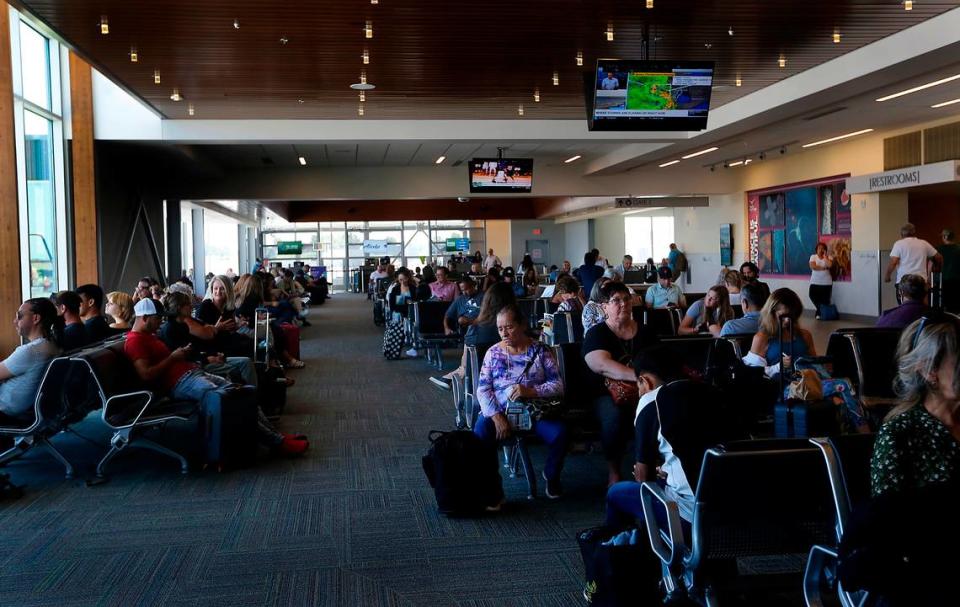
Air traffic revives
Three years ago, the outlook for the Tri-Cities Airport seemed uncertain.
Traffic peaked in 2019 when it tallied a record 438,000 boardings, making it the eighth-busiest of the 543 “small” airports in North America. It was in the top 2% of its class.
It cratered a year later, when COVID-19 restrictions all but halted travel. Boardings fell by more than half.
Unlike its neighbors in Walla Walla and Yakima, the Tri-Cities Airport is bouncing back.
It recorded 201,000 boardings in the first half of 2023 and is on track to beat 2019 by the end of this year.
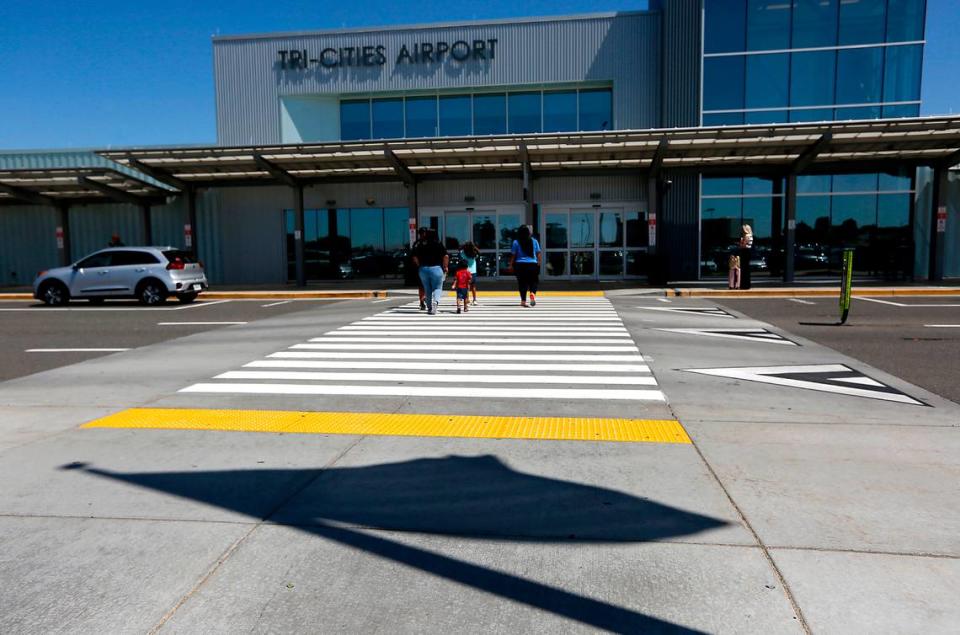
The airport and its five airlines accomplished the comeback with fewer fewer flights, though more seats thanks to those 737s.
Buck Taft, the airport’s manager, said Alaska isn’t the only airline assigning bigger airplanes. The Tri-Cities is increasingly served by what he calls “main lines,” such as Alaska, rather than regionals, such as Horizon.
The arrival of larger aircraft even prompted training for ground crews to move them around the tarmac.
“We’ve just never had to move them on a regular basis,” Taft said. “As we continue to grow, there won’t be a spot at the gate for every plane.
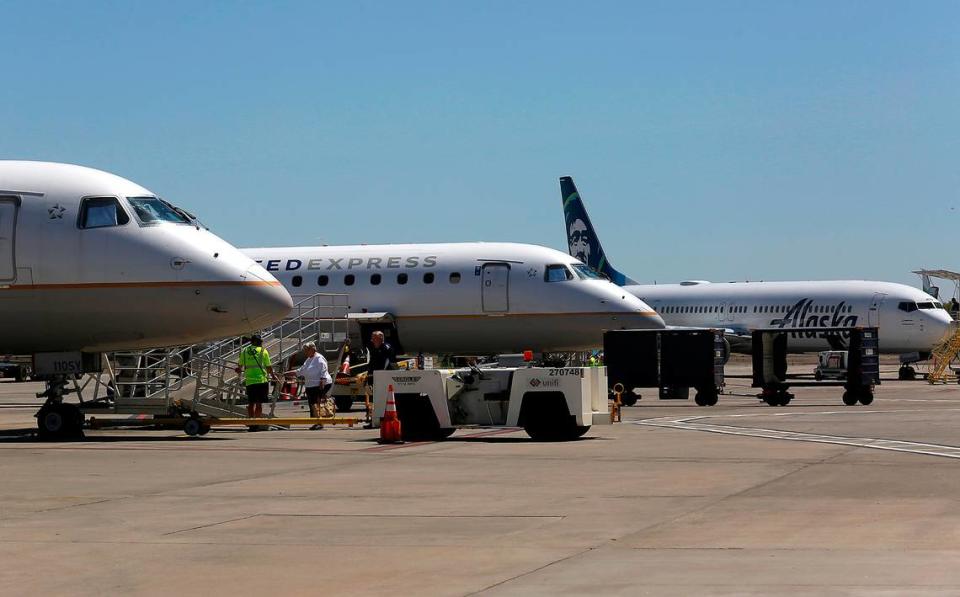
Reviving and thriving
Air travel isn’t just reviving in the Tri-Cities. It is thriving.
With planes flying an average of 91% full, the Tri-Cities outperforms every other airport in Washington, Idaho and Oregon, where the average “load factor” is 82%.
Portland was second at 87%. Seattle-Tacoma was 84%, Bellingham was 83% and Boise was 82%.
“That shows that people are flying out of our airport. Our flights are full. Generally if they’re this full, they’re very profitable,” Taft said. And profits — obviously —matter to airlines.
“They’re not flying airplanes out of the goodness of their hearts.”
Taft doesn’t want to make promises he can’t keep, but he said he is optimistic that Penning’s view will come to fruition.
He sees potential to add routes to additional airports, even to Portland, which was discontinued several years ago.
The Port of Pasco is actively recruiting an airline to provide service to Dallas/Fort Worth International. In 2022, it secured a $750,000 grant from the Federal Aviation Administration to provide revenue guarantees and support marketing efforts.
Taft said he’s even hopeful that Pasco will get a fresh connection to Portland International, which has been missing for several years.
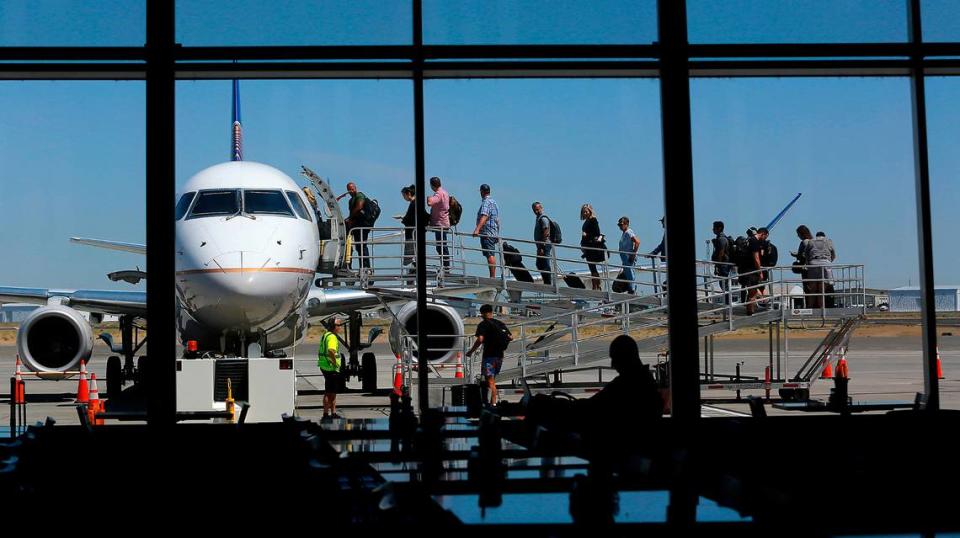
A strong airport is critical to economic development, said Karl Dye, president of the Tri-City Development Council, who adds that Pasco’s newish passenger terminal with its soaring atrium makes a big impression on visitors.
“It’s a huge advantage when people know they can easily fly into Pasco. It makes a huge difference,” he said.
Pilot shortage
A pilot shortage is a major factor in how the airline industry is choosing what airplanes to fly and where to fly them, Penning said in his presentation. The pandemic is a big driver of the problem, which has no easy solution.
About 5,000 commercial pilots took early retirement during the pandemic, representing 7% of the total pilot pool. Of the pilots flying today, 46% face mandatory retirement at age 65 in the next 15 years.
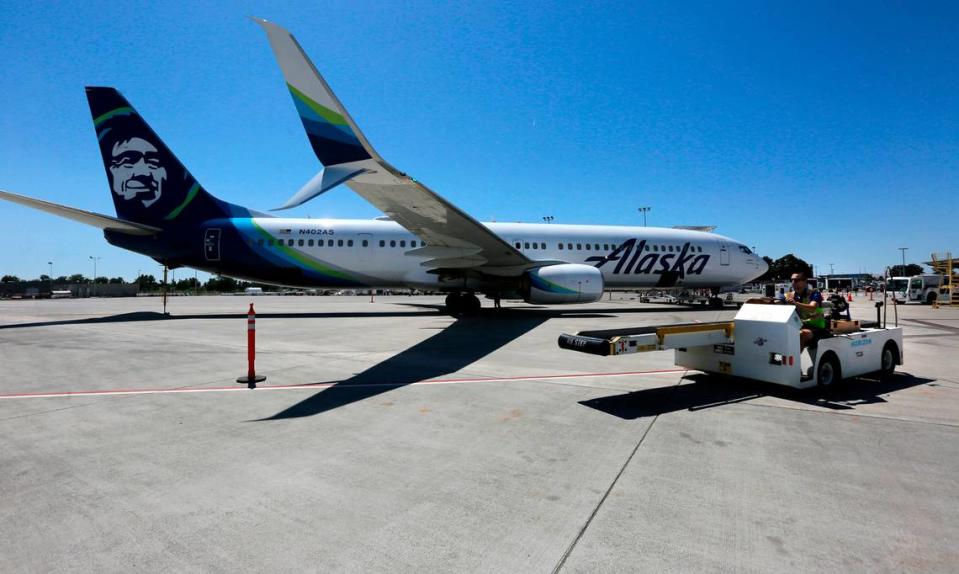
Only 1,000 new pilots had been certified in the first six months of 2023.
“We need 13,500 more pilots than we have today to fly 2019 schedules,” he said. By 2026, the gap will grow to 24,000.
Pilot unions have leveraged their advantage to secure lucrative new contracts for their members. Faced with higher costs, airlines prefer to put qualified pilots into larger planes, where they can sell more seats.
In all, commercial airlines have idled more than 400 regional jets since 2019, according to Regional Airline Association figures cited by Penning. Another 700 regional jets will be parked by 2026, or half the fleet of smaller planes serving smaller airports.
There are several reasons the Tri-Cities fills planes.
A strong presence of federal employees and contractors, including Pacific Northwest National Laboratory and the Hanford nuclear site, provides a stable base of business travelers willing to pay higher fares.
Too, the airport draws from a regional population of about 1 million people within a 90-minute drive.
Currently, about 32% of passengers departing from the region fly out of Pasco. The rest drive to Seattle, Portland and Spokane.
Penning said that’s not just people chasing lower priced fares. It’s people who can’t get seats on the existing flights.
If Pasco were to serve “just” 75% of the passengers from the region, it would need many more connections than it has today, including flights to spots such as Atlanta and Detroit.
Taft said 75% is a worthy goal, but one that will take 15-20 years to reach.
“I’m very excited about the Pasco market. But things take time.”
Sign Up: Boom Town Tri-Cities
Stay up to date on Tri-Cities growth and development with our weekly business newsletter. Get the latest on restaurant and business openings and closings, plus the region’s top housing and employment news. Click here to sign up. In your inbox every Wednesday.

